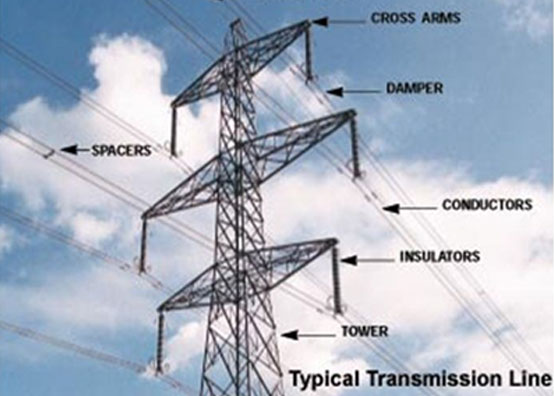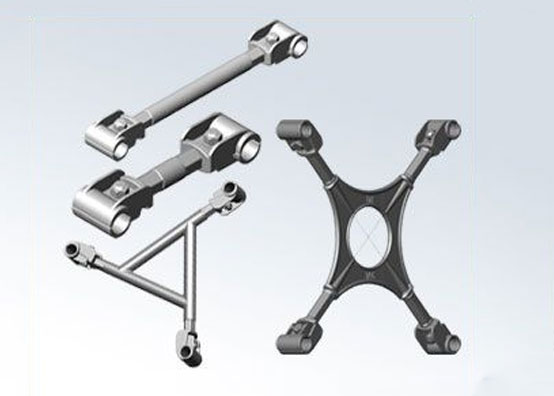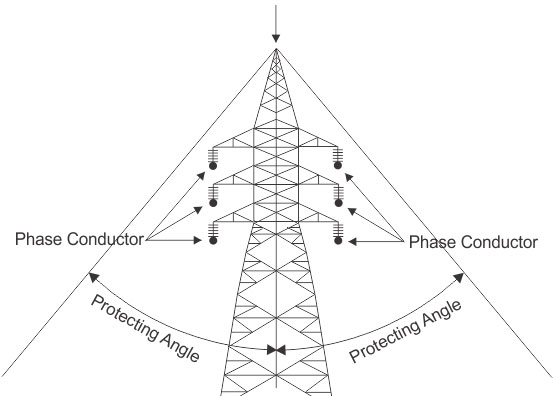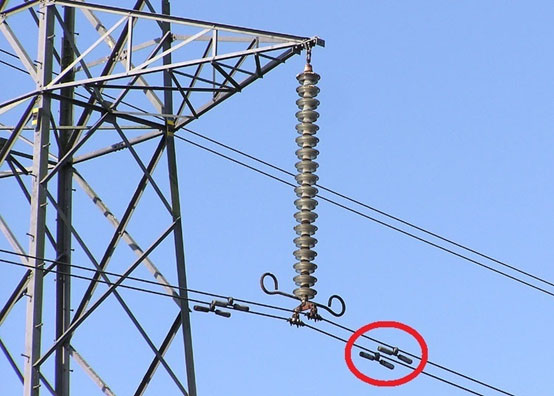Transmission of electric power is the lifeline for a country.
“Electric power transmission is the bulk movement of electrical energy from a generating station or power plant to an electrical substation”.
Transmission towers have to carry the heavy transmission conductor at a sufficient safe height from ground. In addition to that all towers have to sustain all kinds of natural calamities.
Main components of overhead transmission of electric power are…

• Conductors- Used to carry electrical power from generating or power stations to distribution substation.
Transmission higher than 132 kV poses the problem of corona discharge, which causes significant power loss and interference with communication circuits. To reduce this corona effect, it is preferable to use more than one conductor per phase, or bundled conductor.
In bundle conductor, Conductors are joined with the help of Spacers.
Note- Number of conductors in bundle conductor depend on Voltage level. It may be 2,3,4,6,8 etc.
• Spacers- It is used to establish the distance between the partial conductors of a bundle line in order to prevent conductors from knocking together and thus avoid damage done to conductors.

• Earth Wire- The earth wire is usually grounded (earthed) at the top of the supporting structure, to minimize the likelihood of direct lightning strikes to the phase conductors.

• Insulators- It is used to support the conductors and withstand both the normal operating voltage and surges due to switching and lightning.
Different types of insulators are used according to voltage level.

• Cross Arms- Cross arms are the holder that holds the insulator to the tower structure. It plays a very important role since the insulators are holding the line directly.
In simple form, Cross-arms are the arm like equipment that used to hold the insulator and the cable to the tower body.
It is used so that the conductor is maintained at certain height.
• Dampers- Due to wind, overhead transmission lines will be excited to vibrations and oscillations that can lead to damage on the conductor.
In order to reduce these vibrations and oscillations to an uncritical level, dampers are installed in the overhead transmission lines.

• Cross Arms- Cross arms are the holder that holds the insulator to the tower structure. It plays a very important role since the insulators are holding the line directly.
In simple form, Cross-arms are the arm like equipment that used to hold the insulator and the cable to the tower body.
It is used so that the conductor is maintained at certain height.
• Dampers- Due to wind, overhead transmission lines will be excited to vibrations and oscillations that can lead to damage on the conductor.
In order to reduce these vibrations and oscillations to an uncritical level, dampers are installed in the overhead transmission lines.

